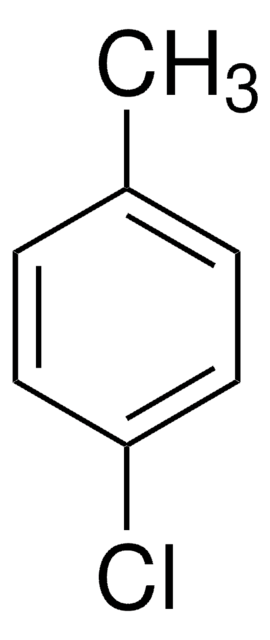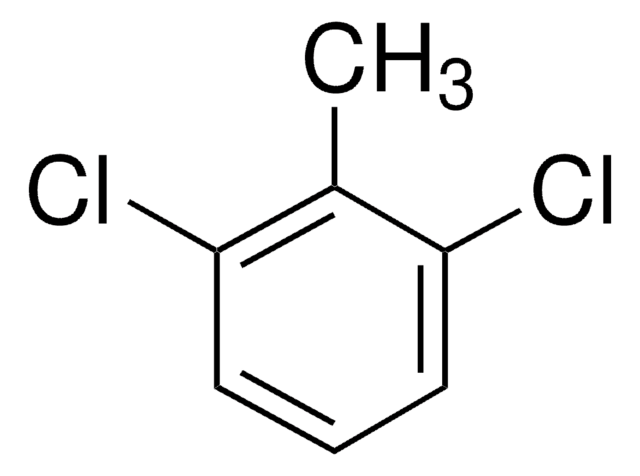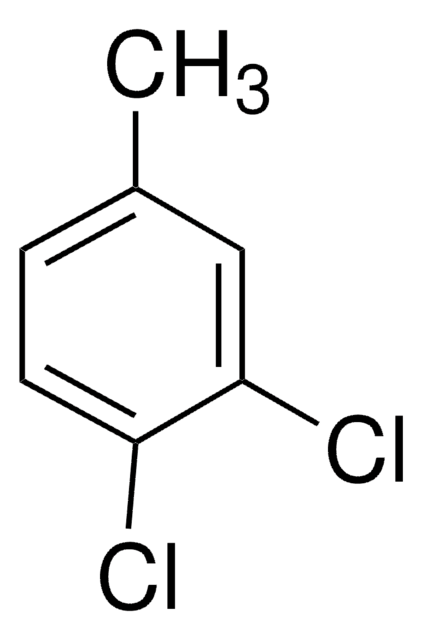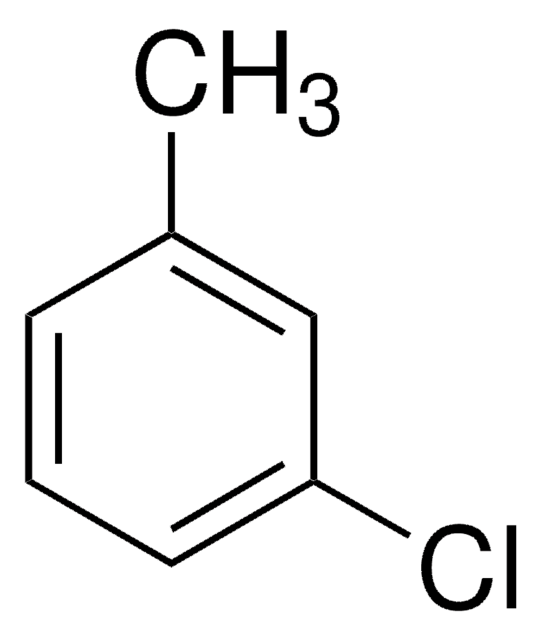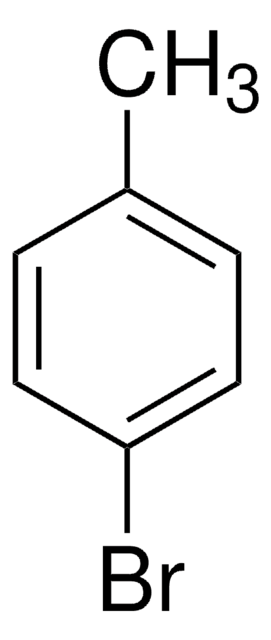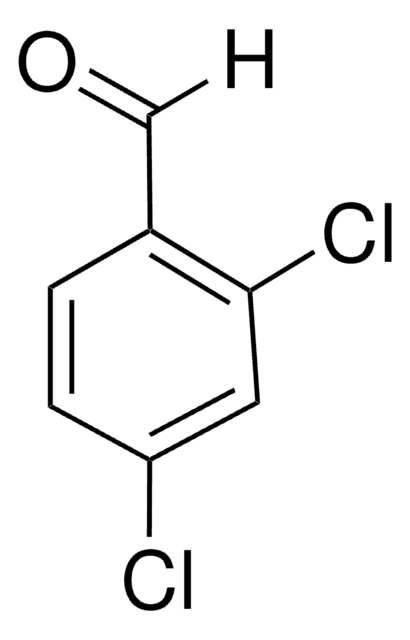145009
2,4-Dichlorotoluene
99%
Sinonimo/i:
1,3-Dichloro-4-methylbenzene, 2,4-Dichloro-1-methylbenzene
Autenticatiper visualizzare i prezzi riservati alla tua organizzazione & contrattuali
About This Item
Formula condensata:
CH3C6H3Cl2
Numero CAS:
Peso molecolare:
161.03
Beilstein:
1931691
Numero CE:
Numero MDL:
Codice UNSPSC:
12352100
ID PubChem:
NACRES:
NA.22
Prodotti consigliati
Livello qualitativo
Saggio
99%
Stato
liquid
Indice di rifrazione
n20/D 1.546 (lit.)
P. ebollizione
200 °C (lit.)
Densità
1.246 g/mL at 25 °C (lit.)
Gruppo funzionale
chloro
Stringa SMILE
Cc1ccc(Cl)cc1Cl
InChI
1S/C7H6Cl2/c1-5-2-3-6(8)4-7(5)9/h2-4H,1H3
FUNUTBJJKQIVSY-UHFFFAOYSA-N
Cerchi prodotti simili? Visita Guida al confronto tra prodotti
Categorie correlate
Applicazioni
2,4-Dichlorotoluene was used as an oxidant and a solvent during anaerobic catalytic oxidation of secondary alcohols by using an in situ (N-heterocyclic carbene)-Ni(0) system. It was used as growth supplement in the culture media of Ralstonia sp. strain PS12. It was used to develop a sensitive method based on solid-phase microextraction followed by gas chromatography-tandem mass spectrometry for the analysis of chlorotoluenes in water samples.
Indicazioni di pericolo
Consigli di prudenza
Classi di pericolo
Aquatic Chronic 2
Codice della classe di stoccaggio
10 - Combustible liquids
Classe di pericolosità dell'acqua (WGK)
WGK 2
Punto d’infiammabilità (°F)
174.2 °F
Punto d’infiammabilità (°C)
79 °C
Dispositivi di protezione individuale
Eyeshields, Gloves, type ABEK (EN14387) respirator filter
Scegli una delle versioni più recenti:
Possiedi già questo prodotto?
I documenti relativi ai prodotti acquistati recentemente sono disponibili nell’Archivio dei documenti.
I clienti hanno visto anche
[Gas chromatographic determination of 2,4-dichlorotoluene in water].
T A Kozeĭko et al.
Gigiena i sanitariia, (3)(3), 44-45 (1988-03-01)
V Karunakaran et al.
Spectrochimica acta. Part A, Molecular and biomolecular spectroscopy, 95, 64-72 (2012-05-23)
The FT-IR and FT-Raman spectra of α-bromo-2,6-dichlorotoluene (αBDCT) have been recorded. The structural and spectroscopic data of the molecule in the ground state have been calculated using Hartree Fock (HF) and Density Functional Theory (DFT)/B3LYP with the standard 6-31++G(d,p) basis
Omid Khakshoor et al.
Journal of the American Chemical Society, 134(6), 3154-3163 (2012-02-04)
We address the recent debate surrounding the ability of 2,4-difluorotoluene (F), a low-polarity mimic of thymine (T), to form a hydrogen-bonded complex with adenine in DNA. The hydrogen bonding ability of F has been characterized as small to zero in
Christophe Berini et al.
Chemistry (Weinheim an der Bergstrasse, Germany), 16(23), 6857-6860 (2010-05-11)
The selective, anaerobic catalytic oxidation of secondary alcohols at room temperature by using an in situ (N-heterocyclic carbene)-Ni(0) system is presented. The use of non-anhydrous, non-degassed 2,4-dichlorotoluene as both the oxidant and the solvent allows for very short reaction times
Katrin Pollmann et al.
Journal of bacteriology, 184(19), 5261-5274 (2002-09-10)
Ralstonia sp. strain PS12 is able to use 2,4-, 2,5-, and 3,4-dichlorotoluene as growth substrates. Dichloromethylcatechols are central intermediates that are formed by TecA tetrachlorobenzene dioxygenase-mediated activation at two adjacent unsubstituted carbon atoms followed by TecB chlorobenzene dihydrodiol dehydrogenase-catalyzed rearomatization
Il team dei nostri ricercatori vanta grande esperienza in tutte le aree della ricerca quali Life Science, scienza dei materiali, sintesi chimica, cromatografia, discipline analitiche, ecc..
Contatta l'Assistenza Tecnica.